#Rusingoryx
Text
Just seen a crash course video on life after the dinosaurs so I'm gonna rate my favourite examples
Pristichamus, a hoof-toed land croc about the size of a dog. It's depicted looking like an ecstatic dog with a chew toy (Apologies to the horse-loving community) 5/10
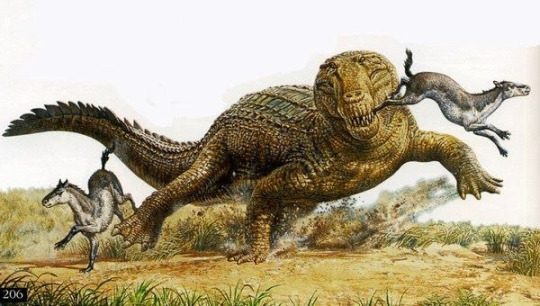
Palorchestes, a taipir-like marsupial the size of a bear. has a rediculous skull and wouldn't look out of place as a sci-fi race. 7/10
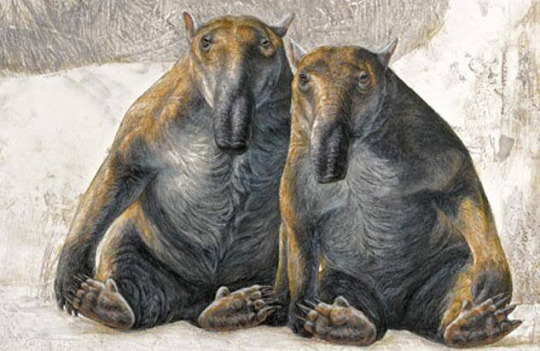

Diprotodon. A big-ass wombat, like the size of a rhino, what more needs saying? 9/10


Dromornis, formally Bullockornis. Dubbed "The Demon Duck of Doom" by the Australians who discovered it, 10/10 for alliterative nickname
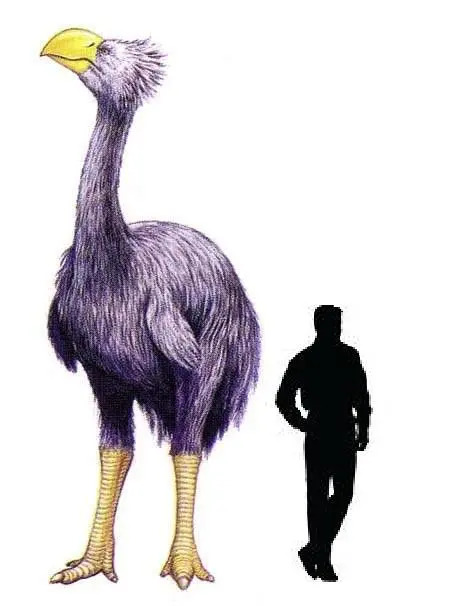
Kelenken, a member of the "Terror Bird" family. This creature inhabits my nightmares, more terifying than any dinosaur, 8/10.

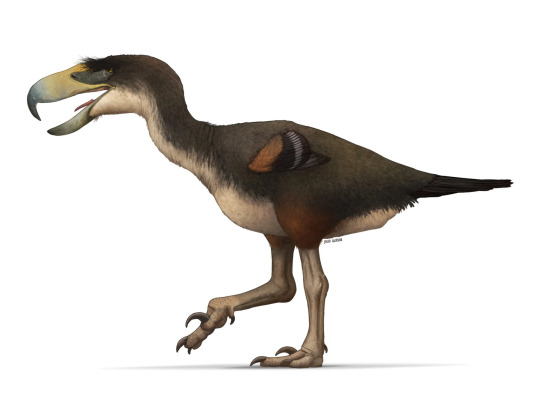
Diadiaphorus, a micro faux-horse from south America small enough to pick up and hold gentle, like hamborgor. Just a little guy, 10/10

Nurolagus, a big ass rabbit the size of a dog. 7/10
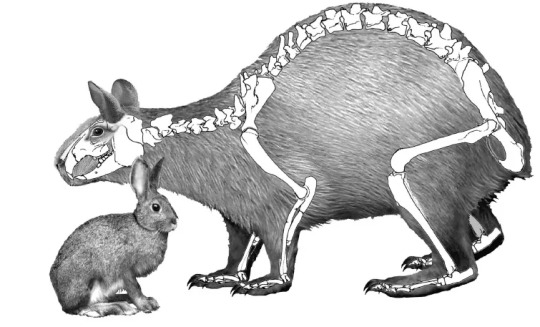
Josephoartigasia, car-sized capybara. 8/10
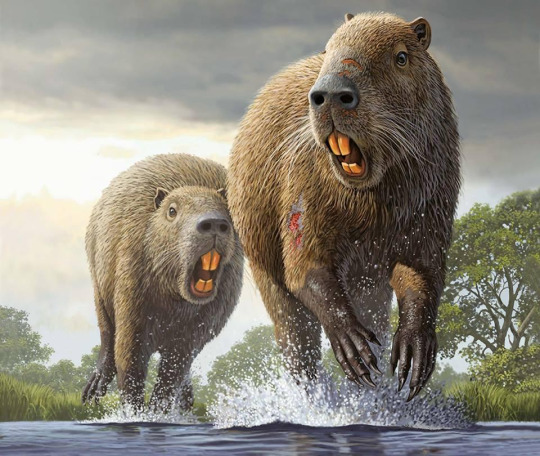
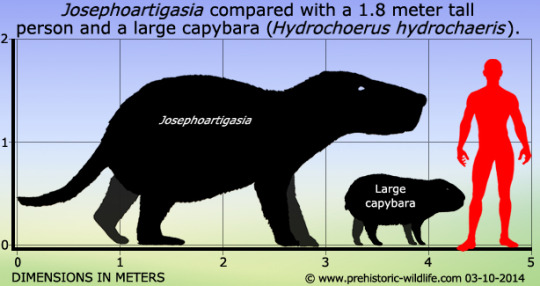
Platybelodon, a fucked-up elephant 4/10
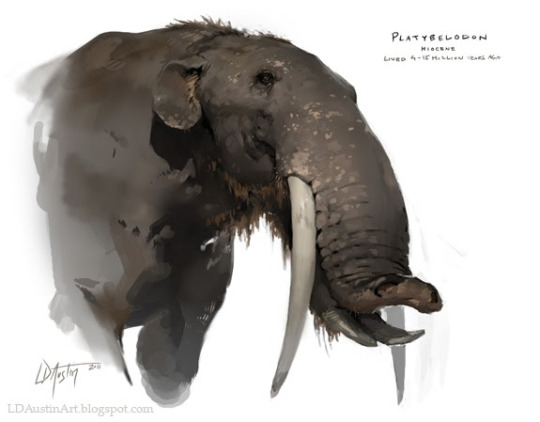
Rusingoryx, a fucked up antelope. Had a resonating nose like some crested dinosaur. 7/10
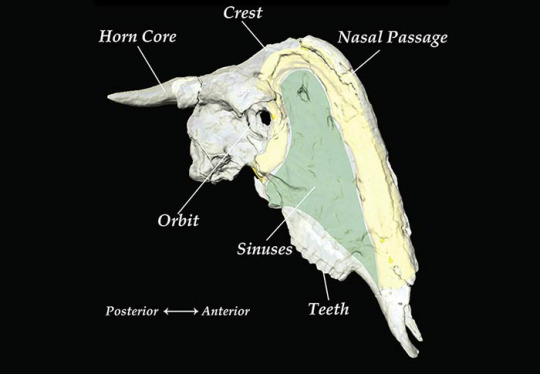
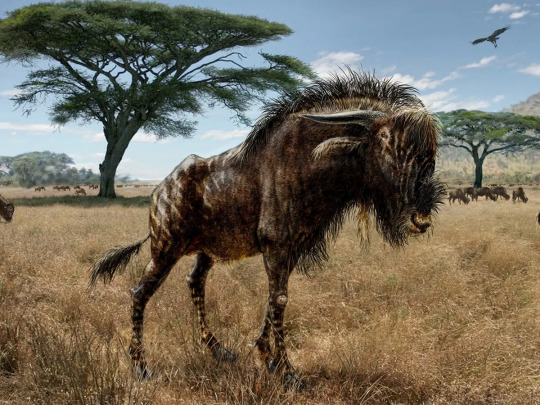
Enteledont, a terestrial hippo often misidentified as a pig. Occupies my nightmare alongside Kelenken, 8/10


Basilosaurus, an early whale still labeled as a lizard for some reason. Huge nostalgia factor for me thanks to Walking with Beasts, 10/10. Should be given an updated name (Basilocetus?)


6 notes
·
View notes
Photo
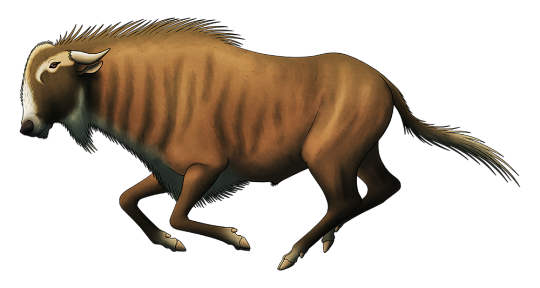
Weird Heads Month #27: The Weirdest Wildebeest
Earlier in this series we saw some ruminants with bizarre-looking headgear, but there was another species in that group that evolved a completely different type of strange head.
Rusingoryx atopocranion was a close relative of modern wildebeest that lived during the late Pleistocene, around 100,000 to 50,000 years ago. Its fossil remains are known from the Kenyan part of Lake Victoria, on Rusinga Island – an area which wasn't actually an island at the time due to lower lake levels, and was instead part of a hot dry grassland environment.
Standing about 1.2m at the shoulder (~4'), it had an oddly-shaped skull with a pointed snout and a highly domed forehead. But this wasn't the thick bony dome of a headbutting animal – this structure was narrow and fairly fragile, and had looping nasal passages running through it.
Instead it was something never before seen in any mammal: a bony nasal crest convergently similar to those of hadrosaurid dinosaurs.
Juveniles had less developed crests, developing them as they matured, and one skull that may represent an adult female also has a smaller crest, suggesting that this feature was sexually dimorphic.
Based on just the anatomy of the nasal passages Rusingoryx may have honked at a frequency similar to a vuvuzela, but the added length of its vocal tract could have lowered this pitch even further, closer to infrasound ranges – so more like a tuba! Such low frequencies can travel very long distances and are also below the hearing range of many carnivores, and would have effectively allowed Rusingoryx to shout at each other in "stealth mode".

———
Nix Illustration | Tumblr | Pillowfort | Twitter | Patreon
#weird heads 2020#science illustration#paleontology#paleoart#palaeoblr#rusingoryx#alcelaphinae#wildebeest#bovidae#ruminant#artiodactyla#ungulate#mammal#art#big honkin' snoots#convergent evolution
186 notes
·
View notes
Text
So Elasmotherium is fucked up now
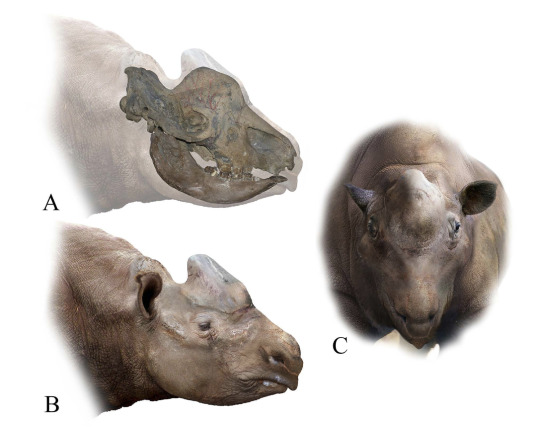
According to Titov et al., the boss on its head (which is where everyone presumed a horn attached) isn't identical in all specimens (it's biggest in adult males, compared to young males and females). It has an external texture less like the base of rhino horn and more like the forehead bosses of cape buffalo and musk ox. Furthermore, the boss is hollow and contains the posterior extent of the nasal passages, similarly to hadrosaurs and Rusingoryx. So the hypothesis is that adult males were using the boss to make noise of some sort.
299 notes
·
View notes
Photo
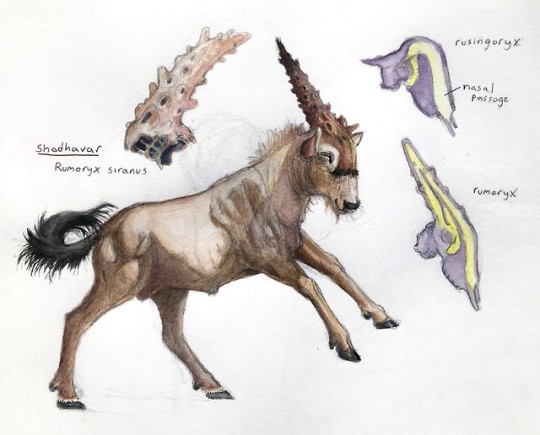
Though at cursory glance this strange animal may appear similar to the unicorn, look closely; the strange, lumpy “horn” is covered in skin, and is in fact not a horn at all! Meet the shadhavar, cousin to the wildebeest and mammalia’s answer to hadrasaurine crests. While it is not literally riddled with holes through which the wind blows freely, the shadhavar’s strange crest is adorned with tubercles which are thought to be associated with sexual display. Males have significantly larger crests than females and up to 72 tubercles, though the average in breeding males is around 42. The crest itself is hollow, and in a case of remarkable convergent evolution to parasaurolophus, allows the amplification of sound to dramatic effect. Some say it’s calls are hauntingly beautiful, others might argue it sounds like a walking vuvuzela; for members of its own kind, the cries carry a variety of meanings from danger to coordination to love. The crest is said to have been gifted to kings, who would hold it at specific angles in a breeze so as to produce unique sounds.
Shadhavar travel in small, loose herds of females and young led by a single male while non-competitive males travel in bachelor groups. A herd may be spread over great distances, as long as they can still hear their neighbors’ low frequency “safety” calls. Though they have always been uncommon, their range has shrunk since the last ice age from much of west Asia to limited ranges in the Anatolian plateau in Turkey. The shadhavar first appeared in the mid Pleistocene, sharing a common ancestor with the now extinct rusingoryx, another alcelaphine bovid with a weird hollow skull.
~~~
Hey so, making posts like this takes a lot of time and energy, and school is time and energy consuming and expensive, so if you’ve got a few bucks to spare, I’d really appreciate it!
https://ko-fi.com/C0C67SZD
#speculative biology#pleistocene#bovidae#shadhavar#unicorn#I've got#another musical creature coming up after this#Islamic bestiaries have a thing for flute faced animals
811 notes
·
View notes
Photo

Just Pinned to Paleo Recipes: Rusingoryx atopocranion an extinct species closely related to wildebeest nativ http://ift.tt/2zUobWs
0 notes
Text
Гну с «вувузелой»
В голове у древних антилоп нашли духовой инструмент, аналог которого был только у ещё более древних динозавров. Вообще говоря, в заголовке мы должны были бы поставить слово доисторический потому что речь пойдёт вымершем родственнике современных гну, который известен как Rusingoryx atopocranion. Впервые останки этих антилоп времён плейстоцена нашли ещё в 1983, но лишь последние палеонтологические находки, сделанные на острове вблизи побережья Кении, позволили исследователям изучить R. ato
читать полностью
сообщает Likada PRO News
0 notes
Text
Incidents and Reflections Episode 56 - 02/07/2016
Incidents and Reflections - 02/07/2016 by Incidentsandreflections on Mixcloud
See Episode 4 for our discussion of the K-Pg extinction itself.
Article links
Convergence between Rusingoryx and lambeosaurine hadrosaurs (Science News coverage) [02:57]
Life after the K-Pg extinction (After the Dinosaurs on Amazon.com) [15:17]
Song links
Children of the Revolution - T. Rex [00:00]
It Ain’t the End of the World - George Segal and Blu Mankuma [51:45]
#Science#WMUC#Incidents and Reflections#Rusingoryx#Extinction#Paleontology#Cretaceous-Paleogene extinction#Fossils#Mass extinction#Hadrosaurs#Dinosaurs
1 note
·
View note
Text
У древней антилопы нашли нос динозавра
У утконосых динозавров (гадрозавров) и вымершей антилопы, похожей на гну, обнаружилось одинаковое анатомическое строение носа. Оба животных отличали��ь трубоподобной носовой полостью, которая доходила до края головы и, вероятно, выступала в качестве резонатора, позволяя издавать громкие звуки. Об открытии сообщается в журнале Current Biology.... Читать дальше »
0 notes
Photo

Elasmotherium sibiricum was a giant rhinoceros that lived during the mid-to-late Pleistocene epoch, between about 800,000 and 39,000 years ago. Found across much of the Eurasian steppe dry grassland environments, it stood around 2.5m tall (8'2") at the top of its humped shoulders and weighed about 4 tonnes (4.4 US tons), making it close in size and mass to a modern elephant.
It was the last known representative of a particularly ancient lineage of rhinos, last sharing a common ancestor with modern forms over 40 million years ago.
A large bony dome on its forehead is traditionally thought to have supported an enormous keratinous horn like the distantly-related woolly rhino, but a 2021 study has recently challenged that interpretation. The dome structure was actually rather thin-walled and wouldn't have been able to support the weight of a giant horn, instead probably being covered by a much stumpier backwards-pointing nub – while an enlarged nasal cavity inside the dome also suggests it may have actually functioned as a resonating chamber, similar to the crests of hadrosaurs or the extinct wildebeest Rusingoryx.
It also had a smaller toughened "pad" on its nose that may have been used along with a prehensile upper lip to dig around in the soil for plant roots and tubers.
———
Nix Illustration | Tumblr | Twitter | Patreon
#...and we're back!#science illustration#paleoart#paleontology#palaeoblr#elasmotherium#elasmotheriinae#rhinocerotidae#rhino#rhinoceros#rhinocerotoidea#perissodactyla#ungulate#mammal#art#big honkin' snoots#unconventional unicorns
373 notes
·
View notes
Text
Ancient wildebeest used dinosaur-like nose to trumpet across savanna
Science
Ancient wildebeest used dinosaur-like nose to trumpet across savanna
They lived millions of years apart but an ancient wildebeest and duck-billed dinosaurs had something in common ... their noses. The weird nasal structure of the rusingoryx, which roamed Africa's savannas tens of thousands of years ago, has been revealed after fossils were found in Kenya. Its crescent-shaped protrusion on the top of its head was unlike anything on any other mammal, past or present. Instead, it resembled the head crests of a group of duck-billed dinosaurs called hadrosaurs, researchers say.
The nasal dome is a completely new structure for mammals — it doesn't look like anything you could see in an animal that's alive today
Researcher Haley O'Brien
The fossils of rusingoryx, about the size of its close cousin the wildebeest, date from about 55,000 to 75,000 years ago. Its hollow nasal structure may have enabled the horned, hoofed grass-eater to produce a low trumpeting sound to communicate over long distances with others in its herd, Ohio University paleontologist Haley O'Brien said. "This structure was incredibly surprising," O'Brien said. "To see a hollow nasal crest outside of dinosaurs and in a mammal that lived so recently is very bizarre." Lambeosaurus and corythosaurus, hadrosaurs with similar nasal structures, lived about 75 million years ago.
Vocalizations can alert predators, and moving their calls into a new frequency could have made communication safer.
Haley O'Brien
0 notes
Photo
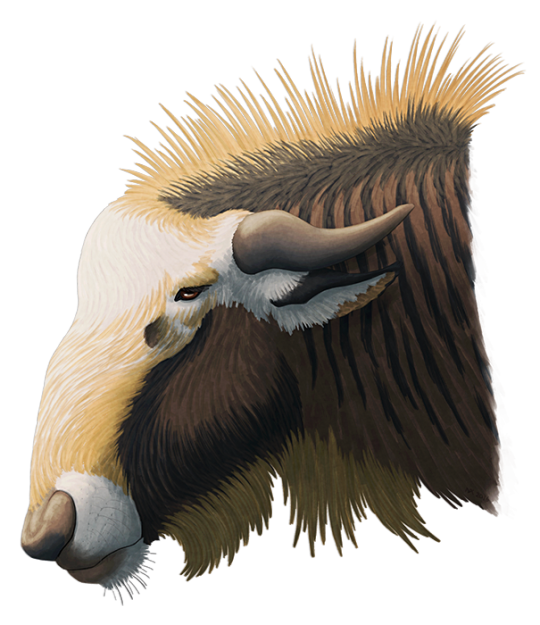
Rusingoryx atopocranion, a bovid from the Late Pleistocene of Rusinga Island, Kenya, living about 75,000 to 50,000 years ago. It was closely related to the modern wildebeest and was about the same size, probably standing around 1.15m tall at the shoulder (3′9″).
Its skull was especially unusual, with enlarged nasal passages forming a raised “crest” on its forehead -- features previously unknown in mammals, but strongly convergent with some types of hadrosaurid dinosaurs.
This structure seems to have been used for sound production, and calculations suggest it made a sort of trumpeting sound in a similar range to a vuvuzela. So a whole herd might have sounded something like this.
#science illustration#paleontology#paleoart#rusingoryx#wildebeest#alcelaphinae#bovidae#artiodactyla#mammal#art#big honkin' snoot
150 notes
·
View notes